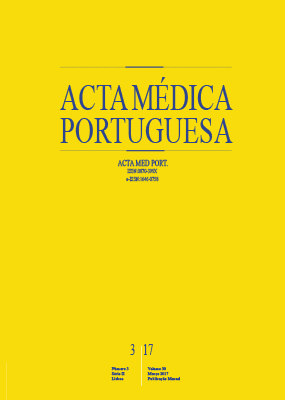Analysis of the Cochrane Review: Topical Treatments for Scalp Psoriasis. Cochrane Database Syst Rev. 2016;2:CD009687.
DOI:
https://doi.org/10.20344/amp.8910Keywords:
Administration, Topical, Dermatologic Agents/therapeutic use, Psoriasis/therapy, Scalp Dermatoses/therapy, Steroids, Systematic Review, Vitamin DAbstract
Regardless the psoriasis subtype, up to 79% of people with this skin condition present scalp involvement, which is often the first site to show symptoms of the disease. In addition to being itchy, the red and scaly lesions are usually easy to see, and may be embarrassing. Topical therapy is usually the first line of treatment; however the wide array of available interventions can make the choice difficult, and may even lead to an inadequate treatment. The objective of this review was to evaluate the efficacy and safety of topical treatments for scalp psoriasis. A systematic review was performed according to the methodology recommended by Cochrane in order to evaluate the clinical severity of psoriasis, quality of life, and adverse events that led to treatment discontinuation. To evaluate this, 59 studies were included, with a total of 11 561 participants, and 15 comparisons were made between the various drugs and application vehicles tested. The principal conclusion is that corticosteroids of high or very high potency are more effective than vitamin D. The combination of a corticosteroid with vitamin D has only a marginal benefit over corticosteroid monotherapy, but is superior to vitamin D alone. Given the similar safety profile and only marginal benefit of the combination of corticosteroid with vitamin D over the corticosteroid alone, topical corticosteroid monotherapy appears to be fully acceptable for short-term therapy of scalp psoriasis.
Downloads
Downloads
Published
How to Cite
Issue
Section
License
All the articles published in the AMP are open access and comply with the requirements of funding agencies or academic institutions. The AMP is governed by the terms of the Creative Commons ‘Attribution – Non-Commercial Use - (CC-BY-NC)’ license, regarding the use by third parties.
It is the author’s responsibility to obtain approval for the reproduction of figures, tables, etc. from other publications.
Upon acceptance of an article for publication, the authors will be asked to complete the ICMJE “Copyright Liability and Copyright Sharing Statement “(http://www.actamedicaportuguesa.com/info/AMP-NormasPublicacao.pdf) and the “Declaration of Potential Conflicts of Interest” (http:// www.icmje.org/conflicts-of-interest). An e-mail will be sent to the corresponding author to acknowledge receipt of the manuscript.
After publication, the authors are authorised to make their articles available in repositories of their institutions of origin, as long as they always mention where they were published and according to the Creative Commons license.









